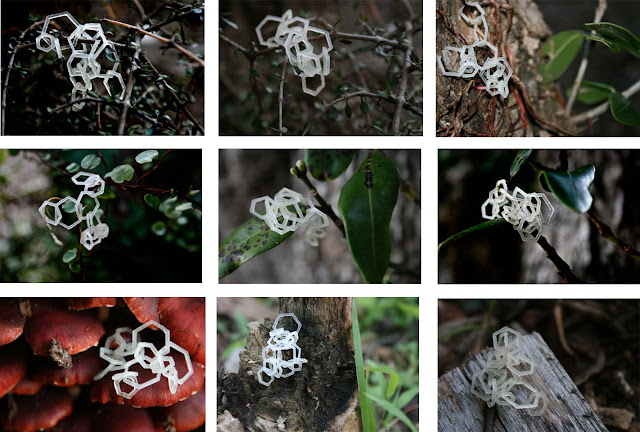This is my final photograph of my model. I think that putting it into a natural environment was a good decision as it effectively conveys that I wanted my model to seem lifelike, organic and natural. I think that in this photograph, due to the area of focus, the hexagonal shape which I used to form my model is predominant, while still giving a good view of my whole form.
My model itself was quite a risk. Having the hexagonal shapes interlinking came with the risk of my model collapsing into a heap once printed in 3D. However, I think that this risk payed off and my model is really intresting and changable and can be made into endless different forms when played around with.



























